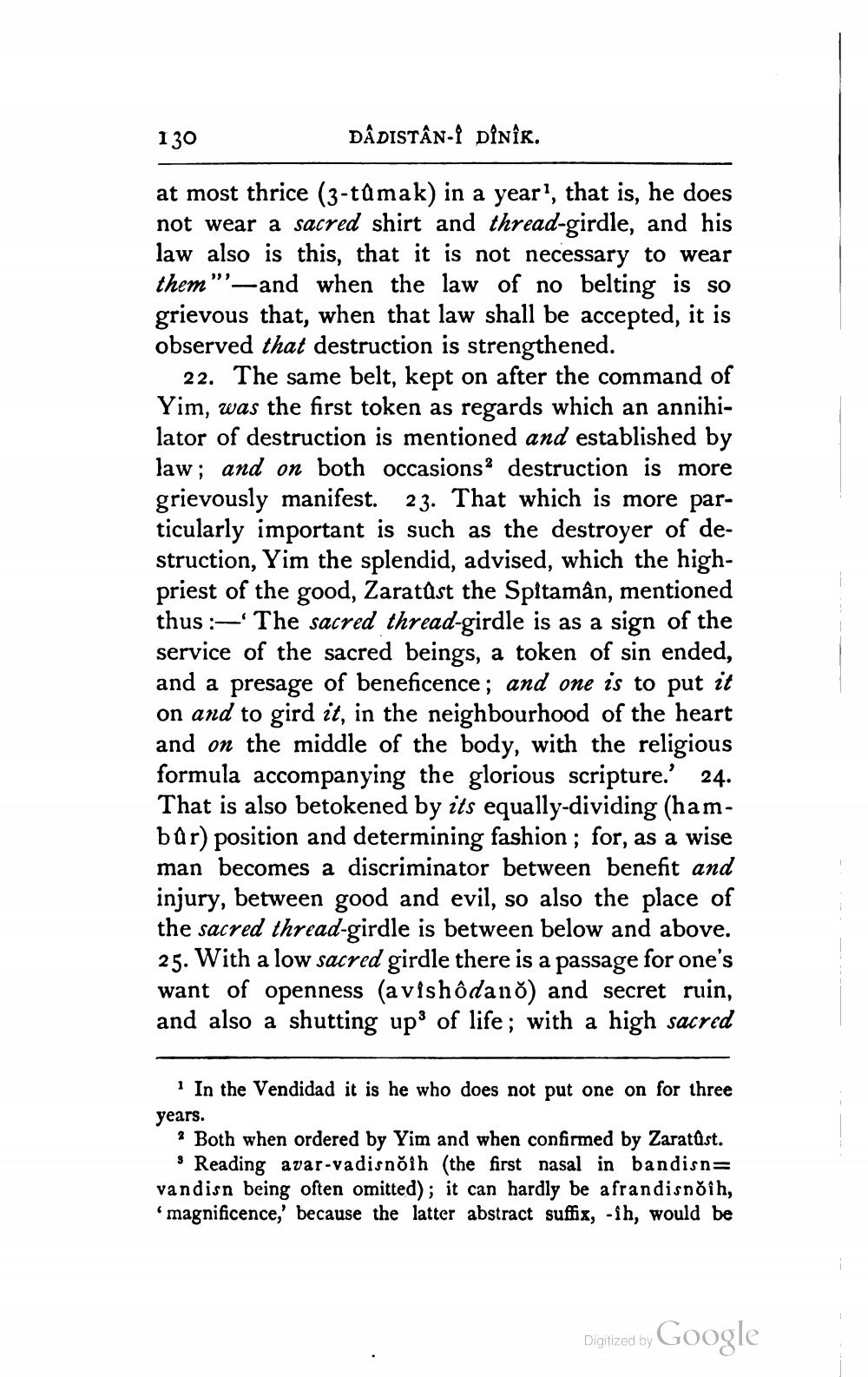________________
130
| ĐẦDISTÂN-1 DN1K.
at most thrice (3-tûmak) in a year', that is, he does not wear a sacred shirt and thread-girdle, and his law also is this, that it is not necessary to wear them”—and when the law of no belting is so grievous that, when that law shall be accepted, it is observed that destruction is strengthened.
22. The same belt, kept on after the command of Yim, was the first token as regards which an annihilator of destruction is mentioned and established by law; and on both occasions destruction is more grievously manifest. 23. That which is more particularly important is such as the destroyer of destruction, Yim the splendid, advised, which the highpriest of the good, Zaratust the Spitamân, mentioned thus :- The sacred thread-girdle is as a sign of the service of the sacred beings, a token of sin ended, and a presage of beneficence; and one is to put it on and to gird it, in the neighbourhood of the heart and on the middle of the body, with the religious formula accompanying the glorious scripture.' 24. That is also betokened by its equally-dividing (hambûr) position and determining fashion ; for, as a wise man becomes a discriminator between benefit and injury, between good and evil, so also the place of the sacred thread-girdle is between below and above. 25. With a low sacred girdle there is a passage for one's want of openness (avishôdano) and secret ruin, and also a shutting up of life; with a high sacred
1 In the Vendidad it is he who does not put one on for three years.
? Both when ordered by Yim and when confirmed by Zaratûst.
* Reading avar vadisnõih (the first nasal in bandisn= vandisn being often omitted); it can hardly be afrandisnõih, magnificence,' because the latter abstract suffix, -ih, would be
Digitized by Google




